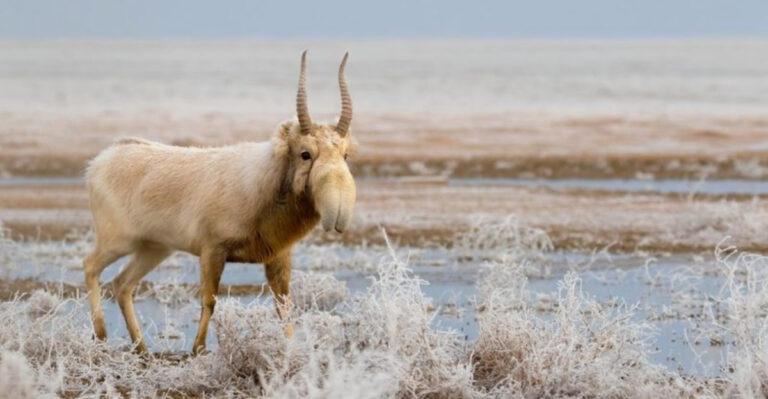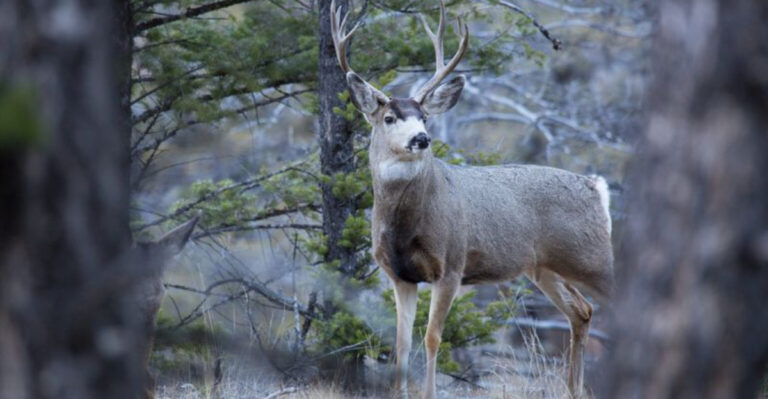The 10 Incredible Ancient Elephants, From Tiny Swimmers To Giant Shovel-Tusked Beasts
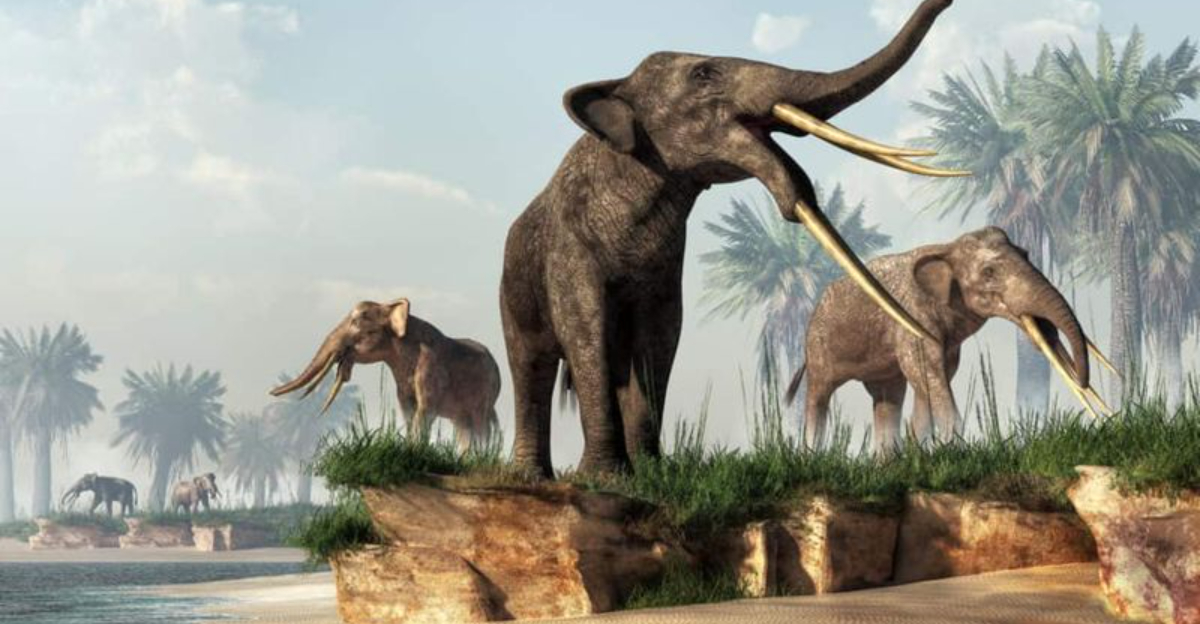
Elephants haven’t always looked like the gentle giants we know today. Millions of years ago, Earth was home to some truly bizarre elephant relatives that would make you do a double-take.
From pint-sized swimmers to monsters with shovel-shaped tusks, these ancient proboscideans (that’s the scientific name for the elephant family) evolved into some of the strangest creatures that ever walked – or swam – across our planet.
Let’s meet these forgotten elephant ancestors and discover just how weird evolution can get!
1. Moeritherium – The Hippo-Like Pioneer

Standing just three feet tall, Moeritherium looked more like a chunky hippo than an elephant. Living about 37-35 million years ago in swampy Egyptian forests, this primitive ancestor didn’t have a trunk yet – just a slightly extended nose.
Its tusks were barely noticeable bumps, nothing like the impressive weapons elephants would later develop. Scientists believe Moeritherium spent much of its time in water, using its short legs to wade through shallow areas while munching on aquatic plants.
Though small and strange-looking, this creature represents one of the first steps in elephant evolution – proof that even the mightiest animals start from humble beginnings!
2. Phosphatherium – The Missing Link
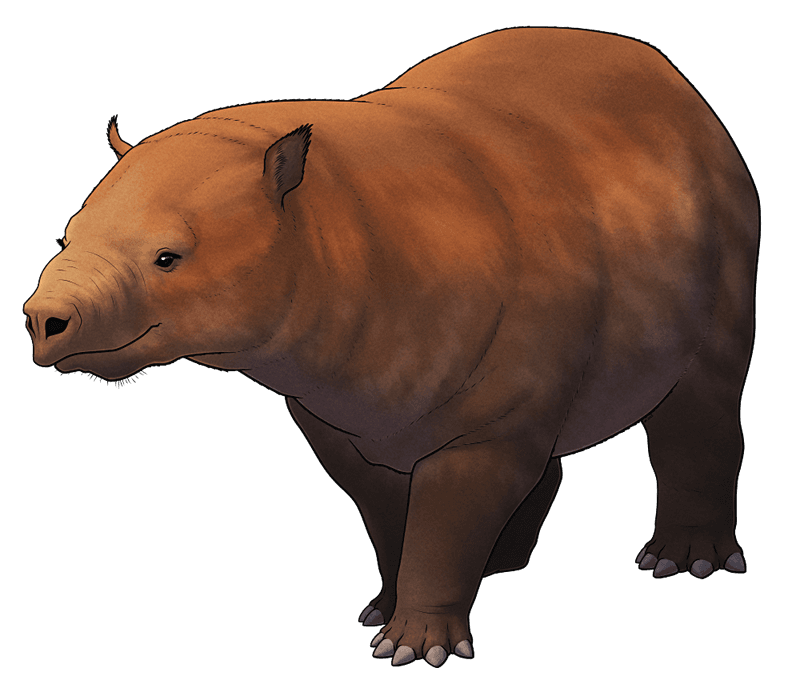
Before Moeritherium came Phosphatherium, possibly the earliest known elephant ancestor from 60 million years ago. Fox-sized and weighing just 15 pounds, you’d never guess this tiny creature would give rise to the largest land mammals on Earth!
Found in Morocco, its fossils reveal specialized teeth that hint at its elephant heritage. Unlike modern elephants with their grass-grinding molars, Phosphatherium had teeth better suited for browsing soft leaves in ancient forests.
What makes this animal special is how it helps fill the evolutionary gap between elephants and their earliest mammal ancestors right after the dinosaurs disappeared.
3. Phiomia – The Trunk Pioneer

Meet Phiomia, the pig-sized animal that gave us the first glimpse of what would become the elephant’s most famous feature – the trunk! Living around 36-30 million years ago in Africa, this creature had a longer snout than its predecessors, showing the early stages of trunk development.
Male Phiomias sported small tusks in their upper jaw, while females had none – an early example of the sexual differences we still see in modern elephants. Their legs were getting longer too, moving away from the squat build of earlier relatives.
Fun fact: Phiomia’s name comes from the Fayum oasis in Egypt where many fossils have been found!
4. Deinotherium – The Backward-Tusked Giant

Imagine an elephant with tusks that curve downward from its lower jaw instead of upward from its upper jaw! That’s Deinotherium, one of the strangest-looking elephant relatives ever. Standing up to 15 feet tall, these giants roamed Africa, Europe, and Asia between 23-2 million years ago.
Scientists think Deinotherium used its bizarre backward tusks to strip bark from trees or dig for water and roots. Their skull shape suggests they had trunks similar to modern elephants, but with these unusual downward-pointing tusks.
Despite their fearsome name (which means “terrible beast”), they were likely gentle plant-eaters that disappeared just as early humans began to spread across their range.
5. Platybelodon – The Shovel-Tusked Swamp Feeder
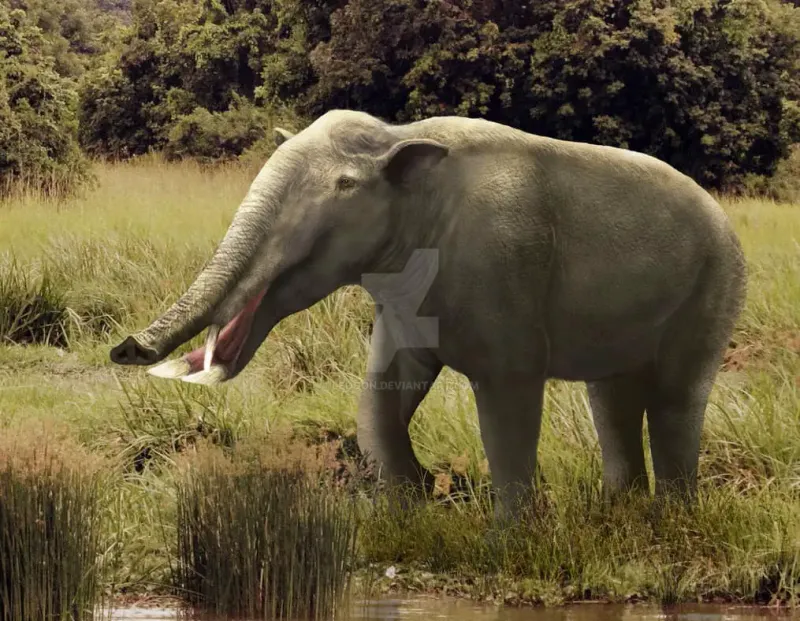
With a name meaning “flat-spear tusk,” Platybelodon looked like someone attached a shovel to an elephant’s face! Living 15-4 million years ago, these bizarre creatures had lower tusks that fused together into a flat, scoop-like structure perfect for gathering swamp vegetation.
Picture this elephant ancestor using its shovel-mouth to scoop up water plants, then straining out the water with its trunk. Standing about as tall as modern elephants but with a more stocky build, Platybelodon thrived in marshy environments across Asia and North America.
Some scientists believe they may have even used their tusk-shovels to strip bark from trees when aquatic plants were scarce!
6. Gomphotherium – The Four-Tusked Wonder

Why have two tusks when you can have four? Gomphotherium broke all the rules with tusks protruding from both its upper AND lower jaws! Living 15-5 million years ago across Africa, Europe, Asia, and North America, these elephant ancestors were truly global travelers.
The upper tusks curved slightly upward like modern elephants, while the lower pair extended forward like spears. Scientists believe they used this unique arrangement to gather different types of plants – the upper tusks for pulling down branches and the lower ones for digging up roots.
At about 10 feet tall, Gomphotherium was slightly smaller than today’s elephants but still an impressive sight with its four-tusked smile!
7. Mammuthus – The Woolly Icons Of The Ice Age

No ancient elephant list would be complete without the woolly mammoth! These shaggy ice age celebrities evolved around 700,000 years ago and survived until just 4,000 years ago – meaning they shared the planet with humans for thousands of years.
Covered in thick fur with an insulating fat layer, mammoths were perfectly adapted for cold climates. Their massive curved tusks – sometimes reaching 15 feet long – were used for fighting, attracting mates, and clearing snow to reach buried plants.
Cave paintings show how important these animals were to our ancestors, who hunted them for food, used their bones for shelter, and possibly even worshipped them in early religious practices.
8. Stegodon – The Forest Giant
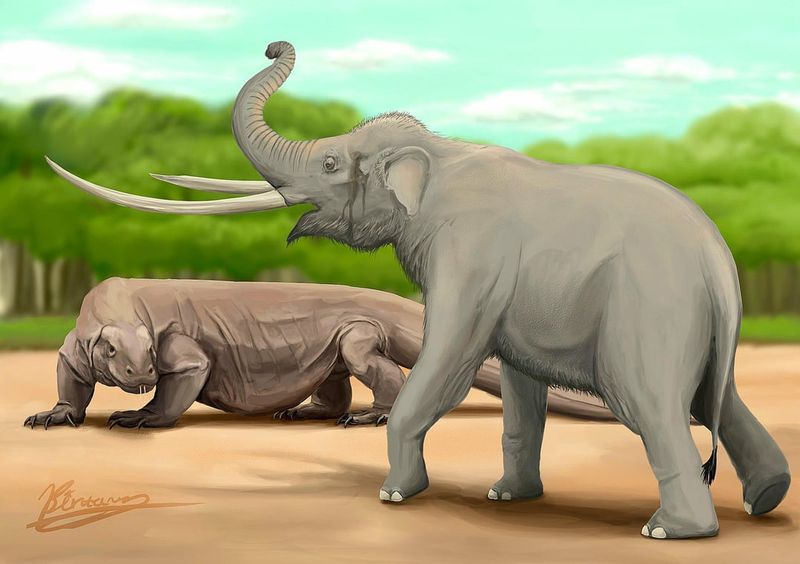
Before modern Asian elephants evolved, the mighty Stegodon ruled the forests of Asia. Living from 11 million to just 12,000 years ago, these giants were among the last ancient elephant types to disappear.
Stegodon’s name means “roofed tooth,” referring to their distinctive ridge-covered molars perfect for processing tough forest vegetation. Their tusks were nearly straight and could grow incredibly long – fossil evidence shows some reaching almost 10 feet!
Fascinating fact: Dwarf Stegodon species evolved on isolated islands like Flores in Indonesia, where limited food caused them to shrink to the size of large pigs – proving even giants can become miniatures under the right conditions!
9. Palaeoloxodon – The Straight-Tusked Forest Elephant
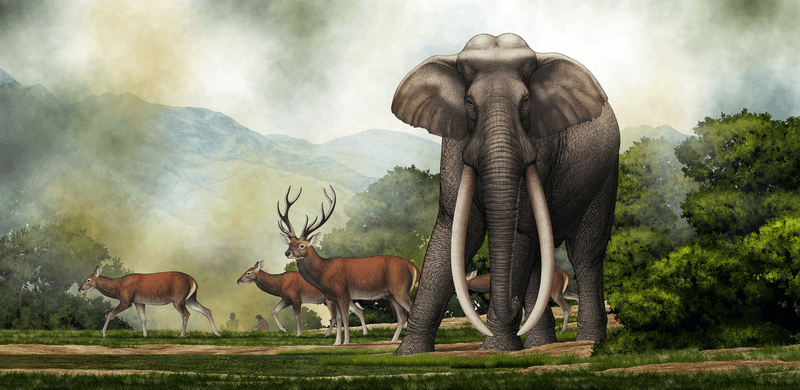
Meet the true giant among giants! Palaeoloxodon namadicus might have been the largest land mammal ever, potentially reaching heights of 17 feet – taller than any elephant alive today. These straight-tusked behemoths roamed across Europe and Asia from 781,000 to just 50,000 years ago.
Unlike the cold-adapted mammoths, Palaeoloxodon preferred warmer forests and woodlands. Their unusually long legs made them look almost stilted compared to other elephants, helping them move efficiently through dense vegetation.
Early humans definitely encountered these giants – archaeologists have found their remains alongside human tools, suggesting our ancestors hunted even the most massive creatures they encountered.
10. Desmostylus – The Swimming Elephant Cousin
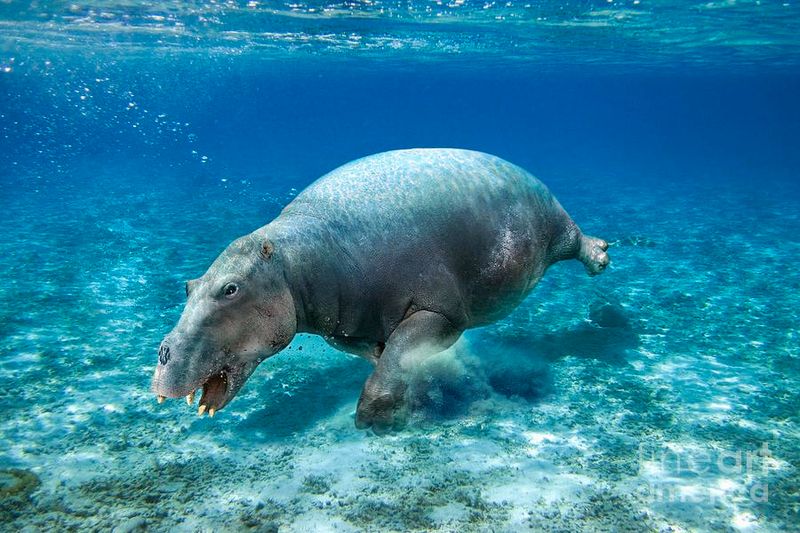
Not all elephant relatives stayed on land! Desmostylus took elephant evolution in a completely different direction, becoming a hippopotamus-like marine mammal that lived along the Pacific coast 23-10 million years ago.
About the size of a small hippo, these bizarre creatures had column-shaped teeth (hence their name meaning “bundle of columns”) perfect for chewing tough seaweed and marine vegetation. Their dense bones helped them stay submerged while feeding on the ocean floor.
Though they looked nothing like elephants, DNA evidence confirms they belong to the same evolutionary branch! Desmostylus shows how adaptable elephant ancestors were – conquering not just land but water environments too.

